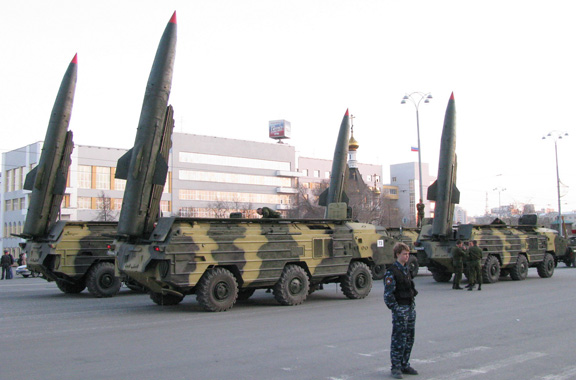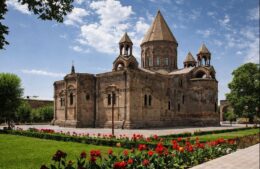Armenia Announces ‘Significant’ Arms Acquisitions
- (0)
YEREVAN (RFE/RL)—The Armenian military on Monday reported “significant” arms acquisitions in 2012 and said it will continue to modernize its forces with precision weaponry in the coming years.
“At the beginning of this year we declared that we have acquired new rocket systems capable of neutralizing active [armor] protection of enemy tanks,” said Artsrun Hovannisian, the spokesman for Armenia’s Defense Ministry. “This is just one example new-generation precision-guided weapons.”
“Naturally, we do not declare some things immediately. But those acquisitions are significant and they will be unveiled little by little,” Hovannisian told a news conference.
“The focus remains on extremely precise means of firepower that have serious preemptive functions,” he said of the army’s plans for 2013. “It’s an ongoing process. You will have a chance to see all that later on.”
The mostly secret acquisitions stem from a five-year plan to modernize Armenia’s armed forces with long-range weapons and other hardware that was approved President Serzh Sarkisian’s administration two years ago. Defense Minister Seyran Ohanian said early this year that the plan is being successfully put into action. Prime Minister Tigran Sargsyan likewise spoke of an on ongoing military buildup shortly afterwards.
Some of the long-range weapons possessed by Armenia were demonstrated for the first time during a military parade in Yerevan in September, 2011. Those included Russian-made Scud-B and Tochka-U missiles capable of hitting strategic targets deep inside Azerbaijani territory.
The Armenian military said in October this year that it has simulated missile strikes on military targets as well as oil and gas installations in Azerbaijan during major exercises held in Armenia and Nagorno-Karabakh throughout that month. It implied that those facilities will be struck in the event of a new Armenian-Azerbaijani war.
Azerbaijan condemned those threats and said its army is strong enough to protect Azerbaijani oil infrastructure and hit any target in Armenia. Over the past decade, Baku has spent billions of dollars in oil and gas revenues on a military buildup which it hopes will eventually enable it to win back Karabakh and other Armenian-controlled territories surrounding the disputed enclave.
The Armenian army also appears to have been reinforced with more advanced versions of Russian-made S-300 air-defense systems. IMINT and Analysis, a U.S. defense newsletter using open-source satellite imagery, reported in October that such systems have been deployed in the last two years in Armenia’s southeastern Syunik province adjacent to Karabakh. The online publication said their sophisticated surface-to-air missiles not only cover the entire Karabakh airspace but can also thwart air travel between Azerbaijan and its Nakhichevan exclave.
Incidentally, President Sarkisian visited a new air-defense base near the reported location of the S-300PS batteries in late October. Official Armenian sources reported no details of its weaponry.
Armenia is able to stay in an intensifying arms race with oil-rich Azerbaijan mainly because of close military ties with Russia that entitle it to receiving Russian weapons at discount prices or even free of charge. A new Russian-Armenian defense agreement signed in August 2010 commits Moscow to helping Yerevan obtain “modern and compatible weaponry and special military hardware.”



















